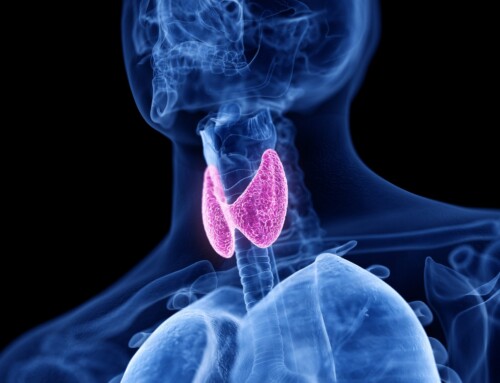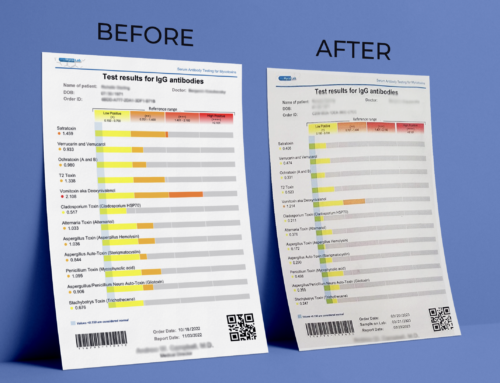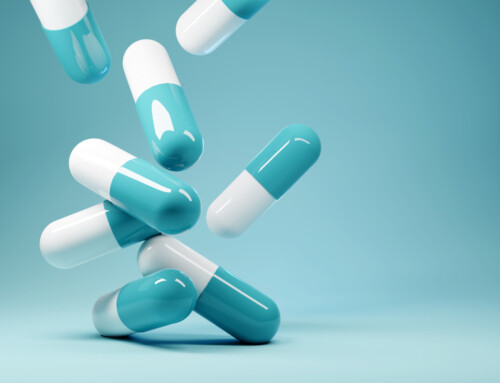Bacteriophages, otherwise known as phages, are virtually everywhere present. Many authors phrase this idea by saying that phages are ubiquitous in nature. We have been conditioned by science to think all viruses are bad. The reality is that phages are viruses of innumerable types, which infect only bacteria and other microbes, not human cells. There are as many as 10 billion phages in just 1 ml of saliva, so imagine the incalculable number of phages throughout the human body. These phages within the body are known as your phageome. The phageome is an under-appreciated aspect of the healthy body’s regulation of bacteria, yeasts, molds, and other microbes. This article will discuss the importance of maintaining a healthy phageome and how it gets damaged, leading to chronic microbial infections and premature death.
Without the action of phages, the friendly and hostile bacterial populations in your body would grow largely unchecked. Yes, even infectious bacteria that are causing illness in your body, that are seemingly incurable even with the harshest prescription antibiotics, are themselves being infected by phages that only infect that type of bacteria.
Much has been researched and written concerning the bacterial community of the body, called the microbiome. These essentially friendly bacteria and other archaea, when in healthy populations, help maintain our health. If these populations begin to grow unchecked or segments of these populations are wiped out by prescription antibiotics and environmental illness can rapidly occur, such as in the condition called SIBO, Small Intestine Bacterial Overgrowth. This condition is why the phageome is so very important.
Your Body’s Phageome
Many people know the benefit of maintaining a healthy microbiome, by taking probiotic supplements or eating probiotic-rich foods, such as live yogurt and fermented foods. As we discussed earlier, it is the action of native, naturally-occurring phages, already living within the human body, that help maintain these friendly, probiotic bacterial populations in balance. When you eat live, cultured fermented foods, these foods are loaded with beneficial bacteria that already infected by phages that are unique to those type bacteria.
Our microbiome is a term for the collective bacterial populations that have taken up residence in our body since birth onward, representing many thousands of types of bacteria. Each of these thousands of types of bacteria, good and bad, have their specific own type of phage that will infect them. Lactobacillus bacteria are infected by Lactobacillus-phages, Staph bacteria are infected by Staph-phages, H. Pylori bacteria by H. Pylori-Phages, E. Coli bacteria by E. Coli-phages, Borrelia bacteria by Borrelia-phages, Klebsiella bacteria by Klebsiella-phages, and so on.
According to compelling research presented by Tanja Mijatovic, PhD, when you contract a bacterial infection, such as in the case of a tick bite infecting you with Lyme Borrelia bacteria, the bacteria enter your body already themselves infected by phages that are hijacking, or using the bacteria’s internal genetic engine, to cause the bacteria to reproduce more of those phages, such as a surrogate mother bearing a child for a couple. This is called a lysogenic cycle.
A person is not born with the Borrelia-phages, but acquires them when infected the first time with Borrelia.
The genetic engine of each individual infected bacteria will crank out an estimated 5200 phages that essentially swim around inside the bacteria until the bacteria bursts open, releasing the phages to now go and seek out more of those type bacteria to start the cycle all over again. One might think that the bacterial population would be completely annihilated, however, although viruses (phages) are not considered “alive,” since they cannot self-replicate, but require another cell, such as bacteria in this case in order to reproduce, they are however definitely intelligent. Phages have the intelligence to seek out and find their unique host and once they infect their host bacteria, the phages sense when collectively they have killed 40% of their host bacterial population. The phages then cease all activity until the bacterial population can regenerate, after which the lysogenic cycle begins once more.
Without the host population of bacteria, the phages could not be reproduced and would themselves all die within less than one week.
With science having documented that the healthy human body has hundreds of type of potentially deadly bacteria living in us without causing illness, we now recognize the important role played by the body’s phageome. It is the phageome along with the healthy immune system that keeps even these potentially pathogenic bacteria from causing disease.
Antibiotic Damage of the Phageome
When antibacterial treatments are used, such as prescription and powerful natural antibacterial products, only a portion of the targeted bacterial infection is killed. Bacteria, like all life forms, strive to survive. Anyone who has treated a bad bacterial infection has likely experienced the need for the doctor to switch the type of antibiotic being used. This situation is caused by the bacteria mutating to avoid the effects of the antibiotics, losing some of it’s outer membrane in the case of bacterial persister cells, or mutating into a completely dormant, cell-wall deficient form, called an L-form.
As the bacteria mutate to survive the attack of the antibiotics, they can also become unrecognizable to their typical regulating native phages. The native phages which would normally limit the overgrowth of these bacteria, no longer can use the bacteria to replicate themselves. The phage population specific to this type of bacteria die off within one week. This is where chronic infections become exponentially destructive and deadly in the body. With no phages to regulate the overgrowth of these mutated bacteria, and with the bacteria now mutated to the point that the body’s own immune system can no longer address them, the bacteria turn into monsters, resistant to all treatments.
Some of the weaker strains of friendly bacteria (probiotics) are completely destroyed by the broad-spectrum antibiotics, causing the death of their unique phage population.
Without a healthy phageome, bacteria, yeasts, and mold overwhelm the body’s defenses.
Conclusion
The modern world has become bacteria and microbe-phobic. The decimation of the microbriome and the phageome is an issue from generations using and according to the National Institute of Health, the overuse of antibiotics leading to antibiotic-resistance.
It is now widely recognized that antibiotics are not the answer for present day infections. Bacteriophage therapy is the world’s only hope, which is why some many biotechnology companies are pushing this science to the forefront.
Phages can be caused to target and annihilate their host bacteria with incredible speed and efficiency, making them the ideal direction for the treatment of any infection.
In an ideal world, the use of phages, such as the native phages that already exist in your body, would be used to kill all of the infection. This is the point and strategy with *Induced Native Phage Therapy (INPT), which is to date the only science to work with the native phages, which entered the human body with the bacteria infection. Ideally, no antibiotics would be used, since we already know for certain that antibiotics no longer work, and were always a poor strategy, when compared to phage therapies.
The healthy native phageome combined with a healthy microbiome are likely the only tools science can turn to in the fight against infectious diseases.
*INPT is being studied at the Biologix Center for Optimum Health, under a Retrospective Registry IRB study on the effectiveness of the treatment philosophy of Biological and Bioregulatory medicine in cases of treatment-resistant and non-responsive illness, within one to three week treatment programs. If you are interested in participating in this study, please contact our Patient Care Coordinators at 615-680-9918 or email at [email protected]





